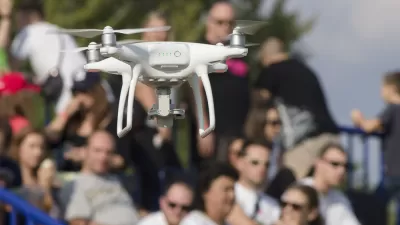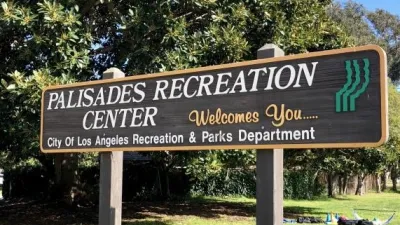Nate Berg muses over the shifting boundary between public and private, as technology follows us from the Internet into the physical world.
Berg summarizes the discussion that unfolds in the latest installment in a series on the computer's impact on architecture and urbanism being published by the Architectural League of New York. In Modulated Cities: Networked Spaces, Reconstituted Subjects, Helen Nissenbaum, New York University Professor of Media, Culture and Communication and Computer Science, and Kazys Varnelis, of the Columbia University Graduate School of Architecture, Planning, and Preservation, trade essays on "the challenges raised by technologies in the urban realm that feed off the information we share on the internet."
On the Internet, we often willingly trade our personal information for the free content and tools that such a tradeoff makes possible. However, we are just beginning to realize the evolving relationship between personal privacy and an increasingly networked physical environment.
"Instead of sustaining the freedoms of physical space online, Nissenbaum writes, we are allowing the way we disregard privacy on the web to follow us into the physical world through RFID tracking, GPS devices, location tracking technologies, crowd-sourced identification and other technologies."
"Both Nissenbaum and Varnelis note that in the physical world, these technologies aren't always under our control, nor are there privacy policies we can choose to accept or reject."
FULL STORY: How the Internet Redefined Urban Space

Alabama: Trump Terminates Settlements for Black Communities Harmed By Raw Sewage
Trump deemed the landmark civil rights agreement “illegal DEI and environmental justice policy.”

Planetizen Federal Action Tracker
A weekly monitor of how Trump’s orders and actions are impacting planners and planning in America.

The 120 Year Old Tiny Home Villages That Sheltered San Francisco’s Earthquake Refugees
More than a century ago, San Francisco mobilized to house thousands of residents displaced by the 1906 earthquake. Could their strategy offer a model for the present?

In Both Crashes and Crime, Public Transportation is Far Safer than Driving
Contrary to popular assumptions, public transportation has far lower crash and crime rates than automobile travel. For safer communities, improve and encourage transit travel.

Report: Zoning Reforms Should Complement Nashville’s Ambitious Transit Plan
Without reform, restrictive zoning codes will limit the impact of the city’s planned transit expansion and could exclude some of the residents who depend on transit the most.

Judge Orders Release of Frozen IRA, IIJA Funding
The decision is a victory for environmental groups who charged that freezing funds for critical infrastructure and disaster response programs caused “real and irreparable harm” to communities.
Urban Design for Planners 1: Software Tools
This six-course series explores essential urban design concepts using open source software and equips planners with the tools they need to participate fully in the urban design process.
Planning for Universal Design
Learn the tools for implementing Universal Design in planning regulations.
Clanton & Associates, Inc.
Jessamine County Fiscal Court
Institute for Housing and Urban Development Studies (IHS)
City of Grandview
Harvard GSD Executive Education
Toledo-Lucas County Plan Commissions
Salt Lake City
NYU Wagner Graduate School of Public Service





























